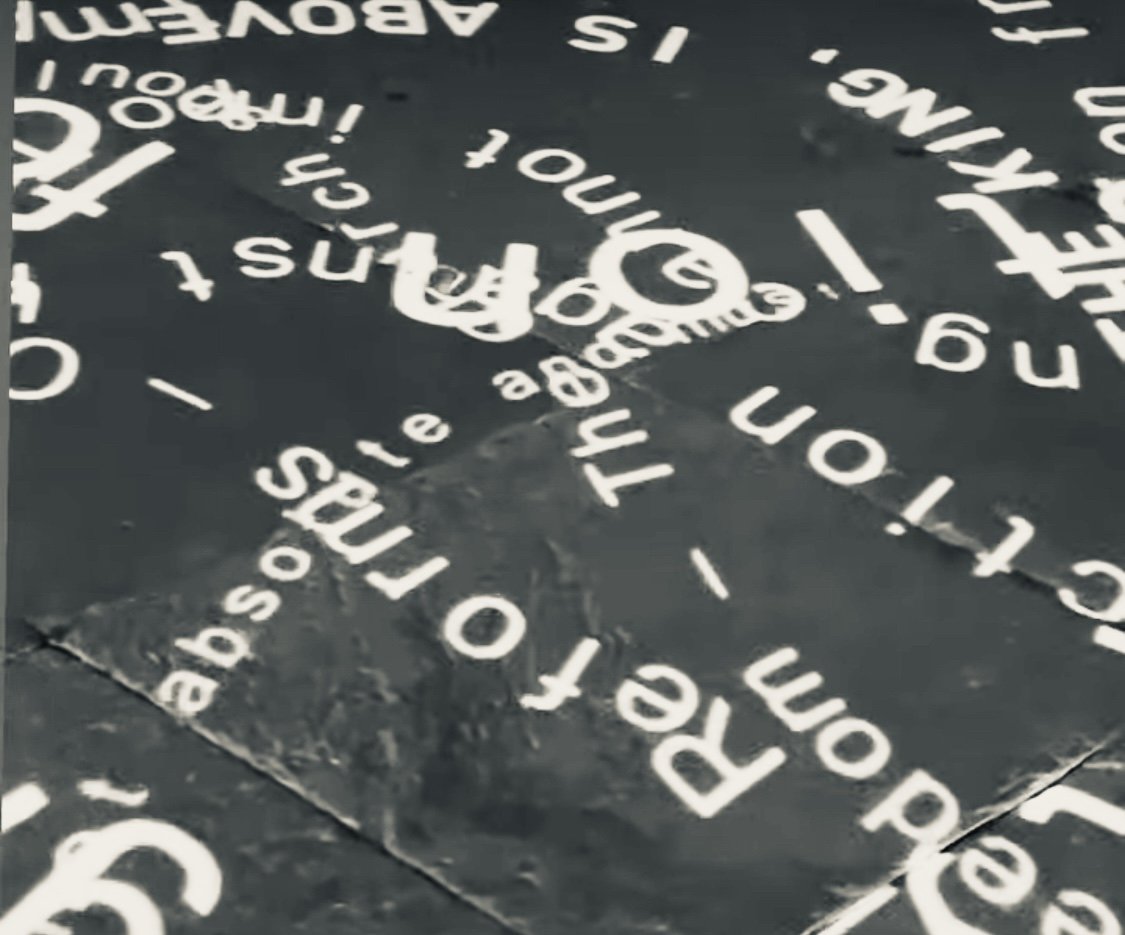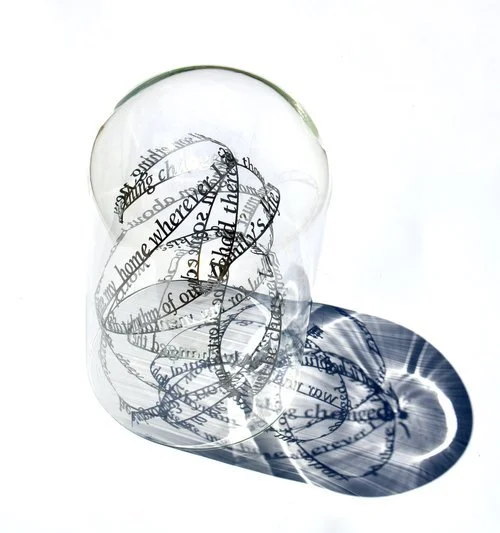It was a pleasure to meet Callaby Magazine’s editor, Rae Hippolyte in Brick Lane, London when I was back in town recently. She was interested in my recent journey to Singapore, my fascination with communication and my paper aeroplane collection…Check out the article she wrote below (View original here):
Recently I’ve had designs on a new life in a far off land. London has become saturated and predictable and although I would still argue, the best city in the UK by far, I can’t help but think that I would be better fed in a new and not so predictable environment with notable seasons and a reasonable amount of breathing space. Insert ideas of a studio in Mexico, a residency in Australia or studying in Amsterdam. With a world of possibilities and opportunities it’s difficult to know the realities of uprooting and how you and your practice will fare in a place where attitudes are different, language is a barrier and cultural communities are hard to infiltrate. Nicola Anthony is a contemporary artist and art critic. Her work uses words as sculptural materials. Fascinated with messages, narratives and text, it isn’t surprising that when she was given the opportunity to establish a second studio in a country with a rich variety of foreign written and spoken languages, she took it with both hands. In my current whimsy I couldn’t pass up the opportunity to talk to her about her experience of establishing a new artistic home in Singapore.
Could you start by telling me a bit about your background.
I studied Fine Art at Central St Martins in London then went to Loughborough University. I came back to london to set up a studio which I’ve had on the South Bank for the past 5 years, and most recently set up a studio in Singapore.
How did moving to Singapore come about?
Basically I got the opportunity to go to Singapore, and it was just one of these things that I couldn’t turn down as I was helped with moving my studio out there and getting set up. The art scene in Singapore is really interesting. It’s built on a very different bases in South East Asia to what we’re used to in the West. Contemporary art there has been around for 20-30 years as opposed to 40-50 years.
Did you personally find it easy to adjust moving from the UK?
It’s always really difficult going through a change like relocating your life, and it was kind of intense for a while, with the pressure of moving, the process of packing up a studio and moving it. But I think I thoroughly prepared myself for it and had lots of time to do that. It’s quite difficult sometimes if you’re not at home or in your own environment and I was aware that I might get there and find that I couldn’t create anything for a few weeks, but I was prepared for that so I managed to get there and start creating straight away.
How difficult do you find it to try and establish yourself as an artist.
It is quite tricky, I feel I’ve got to a stage where people have heard of my work but I cant really tell how that happened. I love to talk to people and I like to talk about other artists’ work that I admire, and word goes around – artists are all talking about each other and it’s good to be generous about other people, because thats the way people hear about others in the art world. You have to think that it will come back to you in some way but it is quite tricky, especially in London as there are so many talented artists here doing so many different things.
…and the work that you’re doing at the moment, being in Singapore with the cultural differences, has that influenced your work at all?
I’ve tried to go there, start living and absorb things and see if that had an effect. I have attempted not to concentrate on work about cultural differences just in case it came across as a bit forced. I wanted it to happen organically and the thing that’s coming through is the different ways of communicating, the subtle differences in the way that people say words or the meaning of words, as well as the massive multi cultural nature of Singapore. There are so many different cultures there as part of being ‘Singaporean’, so the identity of the nation is multicultural in a different way to what it is in England. I haven’t deliberately tried to make it effect my work but it is slowly trickling in. Also I’ve meet loads of different artists and been to all kinds of exhibitions and spaces, so it all has an effect.
Is there anything you’re working on at the moment, ideas your exploring?
I love the fact that a lot of the artists that have a strong chinese family ancestry have a stamp of their name in the chinese symbols – and that’s their signature on the bottom of their artwork. I’m doing an artwork piece in collaboration with some artists who are going through the process of translating my name into Chinese, and the many different meanings that could be, and then eventually coming out with a symbol that means my name (which is then something I will end up using on all the artworks I create whilst in Asia.) I’m fascinated by language and communication – that comes down to words or phrases that we say, fairytales and myths we’re brought up with, and how they are communicated through the generations. A lot of my work looks at words, text and narratives and the small components. The concept of language being a structure that’s made up of many small components, that’s mainly what my work is about currently.
Top 5 tips you would give to someone wanting to move themselves and there practice to another country?
Do the research before you go: Knowing where your home or artist’s studio is located is important, as are all the boring bits – get ahead on any paperwork, vaccinations, or applications needed for visas, working passes, or special artist residency visas. This also makes for less panic in your precious last time before leaving.
Be open to anything: I don’t think you can ever predict what will happen when you move abroad, especially if you are planting yourself in a completely new culture. If you go into it with the right attitude, these can become inspirations, motivations and experiences rather than challenges or unplanned changes.
Finding ways in: I was introduced to locals by friends who knew people living in Singapore. It was great to have made some contacts before I even arrived, and get their perspectives and advice on relocating. Having a way to explore and introduce myself to the art scene through my university was also a great plus: I was invited by the University of the Arts London to set up a Singapore Alumni group as there are around 300 UAL graduates living in Singapore. Starting this collective of creatives has been a great way of meeting fellow artists and like-minded people.
Be prepared for an emotional roller-coaster: Saying good bye to family, friends, home – it’s one of the hardest things I’ve had to do. You need to give yourself time to say goodbyes, not feel like you rushed off.
Visit the country first to make up your mind: I did a trip back in August last year to make my final decisions, work out where I wanted to live, how everything works, and what I would need to ship and bring with me. Being there is really the only way to be sure it’s for you – if it’s possible I would recommend visiting at different times of the year.
Interview by Rae Hippolyte, published in Callaby Magazine, Feb 2013










